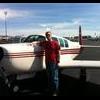-
Posts
209 -
Joined
-
Last visited
-
Days Won
1
N9453V last won the day on June 18 2013
N9453V had the most liked content!
The recent visitors block is disabled and is not being shown to other users.

N9453V replied to nationwide's topic in Miscellaneous Aviation Talk

N9453V replied to swt94025's topic in General Mooney Talk

N9453V replied to swt94025's topic in General Mooney Talk

N9453V replied to swt94025's topic in General Mooney Talk

N9453V replied to swt94025's topic in General Mooney Talk
We have placed cookies on your device to help make this website better. You can adjust your cookie settings, otherwise we'll assume you're okay to continue.